We’re into the penultimate part of our history of PC Zone magazine. Having missed a significant chunk of it out (sorry), we rejoin Zone in the mid-late 00s.
Part 7: 2006-2007 – A Bright Future
Sadly, I can’t tell you much about Zone between 2003-2005. I never bought or read the magazine, and I can’t find any old scans online either. What I do know is that Dave Woods remained editor for a while before handing over to Jamie Sefton, first spotted in Zone towards the end of 2002. In 2004 Zone was acquired by Future Publishing, responsible for Zone’s long-time rival PC Gamer. It seemed only a matter of time before Future shut Zone down, but incredibly it kept going for another six years.
Much as I couldn’t really put my finger on why I stopped reading, I’m not sure why I started again. As I’ve mentioned before, things weren’t really that productive on the FFG front during these years, and I think most of my gaming life revolved around a) practising playing Pro Evolution Soccer and b) trying to beat my friend PG at Pro Evolution Soccer. To find out more about the latest Pro Evolution Soccer, whether FIFA was really getting better (or not), and to read up on the latest PS2 racers, I turned to Eurogamer, a website which had started with a mainly PC focus but soon became the UK’s leading multiformat site. I particularly enjoyed the writing of Tom Bramwell and Kristan Reed, who generally covered the racing and sports games at that time.
2006 was the year I wrote up my brief Zone history (in which I said it probably wasn’t as good as it used to be), had a brief personal crisis, and then somehow ended up buying the magazine again. There might be a joke in there somewhere. In fact, I think someone bought me a subscription, possibly in an attempt to try and cheer me up or perhaps as a birthday present, I’m not sure. I was certainly as out of touch with PC gaming as ever, in terms of actually playing the games: my machine was a 2001-era Win ’98 shitbox, so I was limited to games of that era (or earlier). Still, reading Zone wasn’t ever really about which of the latest games I should buy, and I was interested in catching up with it again.
For the record, my first issue since 2002 was the July 2006 edition, but seeing as I’ve missed out a large piece of the magazine’s history, and the scans are available, I’ll go back to the start of 2006 and Zone 163. The Zone look had changed again after a 2005 redesign, and it was still in place in 2010 at the time of the final issue. I guess the best you can say about it is that it did convey a certain carefree spirit, although it was all a little on the zany side for my tastes. But, I guess these were different times. I’m not sure exactly how the 00s will be remembered, but inasmuch as Zone reflected the period, there was certainly a level of brash complacency about things which now seems both endearing and irritating in equal measure. Ah, if only we had known about all the crappy things that were going to happen. (Like the end of PC Zone, for one thing).
The line-up included some familiar faces (Sefton, Steve Hill, Korda, Wandy, and Prezzer – although not for much longer) but also a number of new ones who would form the core of the team during the next couple of years: Will Porter, Steve Hogarty and Suzy Wallace (joined by Jon ‘Log’ Blyth in Zone 167). Also making an appearance was ex-GamesMaster presenter and 90s gaming celebrity, Dominik Diamond, who contributed a monthly column on the back page. I think the intention was to kind of channel Mr Cursor with a mixture of ignorance and irreverence but it somehow never quite worked and his column was cut a few issues into 2006. That was the end of the back page regular feature, replaced until the end of Zone’s life with a random miscellany of humorous features, not many of which really hit the mark.
In some respects, despite the three year gap, it was a case of the more things change, the more they stay the same: the letters page contained speculation about whether the Xbox 360 would be a threat to the PC, while the reviews intro made a reference to accepting bribes that echoed those in the very first edition of Zone. And, in a bizarre piece of coincidence, there was an interview with Charles Cecil, who by this point was backtracking from some things he said at the end of my last stint as a Zone reader about the end of the traditional adventure and the Broken Sword series. (Along with an admittance that The Sleeping Dragon had too many box-moving puzzles).
Things that were new: Pavel Barter’s Special Report, a regular feature on something vaguely serious; Argue The Toss, a mildly contrived brief discussion piece; and Freeplay, a section bringing together demos, freeware and mods. Also: Abandonware! Yes, an actual section on the extremely dangerous and illegal abandonware scene, brought to you by Kosta from Abandonia. (No mention of a patchy reviews site with tiled backgrounds, sadly). This was later phased out and replaced by the return of Retro Zone, once contributed by Stuart Campbell (but no longer, most likely due to his acrimonious history with publishers Future) which combined coverage of PC oldies with emulation and other retro interests.
The Supertest was an ongoing concern, although topics had wisely been broadened beyond games from a particular genre, and it was no longer in a written format, but came in the form of an audio discussion available on the cover disk. I have to be perfectly honest and say that I never once listened to one of these: ever the luddite, I wasn’t even sure what a podcast was at this point, and I think I was rocking one of those early MP3 players with about 128MB of storage. But most of all, I wasn’t sure I actually wanted to hear my games writers speak: I bought magazines to read words, and I wanted to know the writers through those words rather than recorded discussions. Like finding out what your favourite radio DJs looked like, hearing your games writers speak was, I thought, bound to end in disappointment.
What about teh gamez?! Well, I didn’t actually have a computer that could play anything that was being reviewed at the time, although I’ve caught up a bit since. I remember The Elder Scrolls: Oblivion (Zone 167, 95%) casting quite a large shadow over everything at the time: there seemed to be a feature or some mention of it in every issue for a while. It looked quite good, though: perhaps that’s why it’s the only Elder Scrolls game I ever made any effort with. If I was one of those boring people obsessed with review ‘accuracy’, I might say that they were a bit harsh on Flatout 2 (Zone 171, 76%), Dreamfall (Zone 169, 66%) and Pro Evolution Soccer 6 (Zone 175, 88%) and possibly a bit generous in their evaluation of Prey (Zone 170, 86%) and Sensible Soccer 2006 (Zone 170, 79%). But I’m not.
Although on that subject, a certain level of seriousness did seem to be a requirement for reviews, which didn’t seem to be so much the case ten years earlier. Particularly when it came to big-name or worthy releases, write-ups seemed a little drier, with more emphasis on technical details, deconstructing the gameplay (yes I used the word gameplay) and ‘information’. Again, it could just be nostalgia talking, but even if it were true I completely understand why this would be the case – with humourless gamers increasingly obsessed with professionalism, ‘objective’ reviews and facts, certain bases had to be covered. There was of course still the opportunity to take the piss out of crap games, like Sims 2 Expansion Packs, or The Matrix: Path of Neo, memorably dubbed “The Shitetrix: Path of Shite-o” (which may not have been big or clever, but still raises a faint smirk every time I read it).
As well as the usual short reviews of budget games, there were a couple of pages dedicated to indie games too. I have to admit that, at the time, I never thought the scene would explode in quite the way it has, especially going on the often derivative looking platform games and shoot ’em ups that seemed to appear in Indie Zone each month. I even scoffed at the moderate acclaim given to a low-fi adventure featuring a crime-fighting Rabbi – but I was as wrong about that as I was about the indie scene in general. While we’re on the topic, indie developer and occasional Zone reviewer Dan “Ben There, Dan That” Marshall wrote a series of articles chronicling the development of his first game Gibbage (reviewed in Indie Zone 168, 71%) during this period.
Steve Hill was wheeled out to review football games, which by this point pretty much consisted of the annual instalments of Football Manager, FIFA and PES (although I was reminded that at one point EA had the Champions League license and inevitably used it as an excuse to shunt out a weird FIFA spin-off in between regular releases). Barring a one-off return for Reality Check (“An unscheduled tear-up the previous evening has left me feeling somewhat less than 100%. An excruciating period of internal turmoil ensues, finally coming to a head when body overrules mind and explosively pebble-dashes a South West Trains toilet with a partially digested chicken jalfrezi and half a gallon of cooking lager”) Hill’s main ongoing contribution was the NeverQuest column, in which he wrote up his adventures in a variety of the period’s MMOs. Unfortunately my antipathy towards all things multiplayer meant I never gave it my full attention.
Awful ads appeared less frequently, although somewhat embarrassingly the most obvious offenders were adverts for other Future magazines. No, I’m not talking about ads for PC Gamer (given their past rivalry it was extremely weird to see such a thing in the pages of Zone, although apparently there were ads for Zone in Gamer as well) but various gaudy console mags. Here’s the worst of the lot, for PlayStation World, with an extremely tasteless remark about the star of Need for Speed: Carbon, compounded by the fact they can’t even spell her name correctly:
It’s likely that such ads were the inspiration for one of the funnier back-page features, Zone 178’s mock-up of the ‘new-look’ PC Zone. (I also liked Dear Willdre, from Zone 179).
I can’t recall receiving a free gift with my subscription, but the quality of those on offer did seem to have gone up a bit since 2002, with some actual games and a dreadful, gaudy-looking (but apparently expensive) mouse on offer at various points. Although the mouse was later downgraded to a mouse mat. Incidentally, are those pimped-up glowing Alienware PCs still a thing? I was reluctantly willing to accept the transition from beige to grey or black, but PCs aren’t cool and should be boring looking. Or at least shouldn’t look like Bow-Wow’s car from The Fast and the Furious: Tokyo Drift.
Dell make reliably-boring looking PCs, the type that your office probably buys, but for some reason they had some kind of tie-in with the X-Men movies around this time. So there were a few ads for X-Men: The Last Stand (mildly controversial opinion: I quite liked it) in Zone but also adverts for Dell featuring Hugh Jackman’s face and a weird, badly-drawn version of Alan Cumming’s Nightcrawler. I never did work out what that was all about. Would the X-Men make you more likely to buy a Dell PC? Do the X-Men use Dell PCs in The Last Stand? Perhaps I need to re-watch it.
Quotes:
“Imagine the action scenes of Splinter Cell written in the form of a 10-year old’s ‘My Summer’ essay and you’ll get the gist. ‘And then I broke his neck. And I hid. And it was nice.’”
– Steve Hogarty gets stuck into the Splinter Cell novel (Zone 166, April 2006)
“When I was a kid, I used to do a play-by-mail football management game. Every week with a cheque for £1.50, I’d send off almost illegible scrawls of basic tactics, vicious rebuffals to the advances made by other sheepskin-coat-wearing 11-year olds and fresh ideas to finance the ailing postal side that was Bedford United. I believe at one point I was trying to encourage circuses to occupy the centre circle of the pitch on match days. It sounds weird, but it was nothing compared to the oddness of my mum having to answer the phone to pre-adolescents putting on deep voices and demanding to speak to ‘the manager of Bedford United’”
– The release of Football Manager Live prompts a reminder from Will Porter of how things used to be (Zone 181, June 2007)
“I recently read The Righteous Men by Sam Bourne (a religious detective thriller in a similar vein to The Da Vinci Code). In this book, the main character is called Will, and is a journalist for The New York Times. Apart from your Zone scribe, I know of no journalists by the name of Will, and so throughout the entire book, I pictured the protagonist as Will Porter, with the small picture of him shouting into an N-Gage used in PC Zone as a reference.”
– Porter receives some fan mail. Also: who remembers the N-Gage? And the concept of ‘sidetalking’? (Zone 175, Christmas 2006)
“Magistrix Erona is she, and Mana Wyrms are they, with the requisite eight dispatched with the minimum of fuss, thanks to the timely intervention from a female elf, name of Bloodin. Why am I writing like this? I’ll be ordering a frothing pint of Nutty Slack from the Stout Yeoman of the bar at this rate. These f***ing games have warped my mind. This is no kind of life. It’s 2.30am, there’s an ancient repeat of Bullseye on TV, and I’m attempting to compose a pithy tale about elves.”
– World of Warcraft prompts a moment of clarity from Steve Hill (Zone 179, April 2007)
Episode Two ends, unexpectedly, with one of Half-Life’s most thrilling scenes, setting up wonderfully for the next act, which promises to be a good ‘un. Let’s just hope we won’t have to wait another year and a half to play it.”
– Ha ha! Try ten years, Mr Steve Hogarty! (Zone 187, December 2007)
Next time: Part 8 – The bitter end…

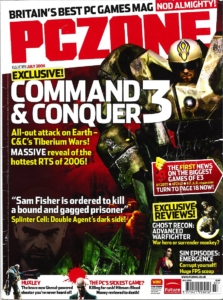
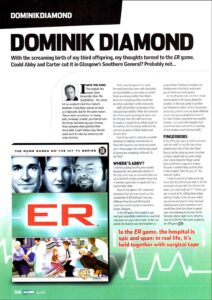
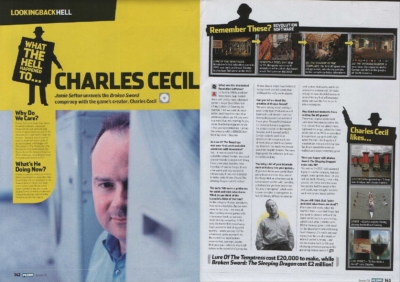
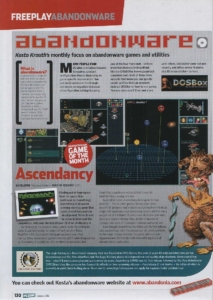
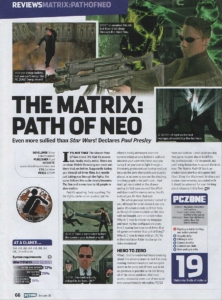
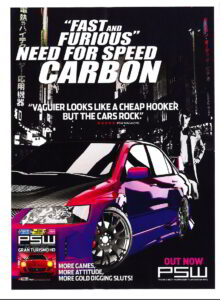
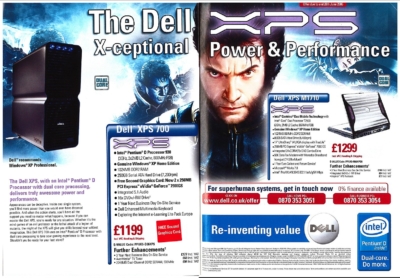

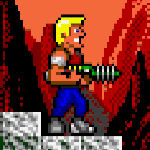
 Posts
Posts